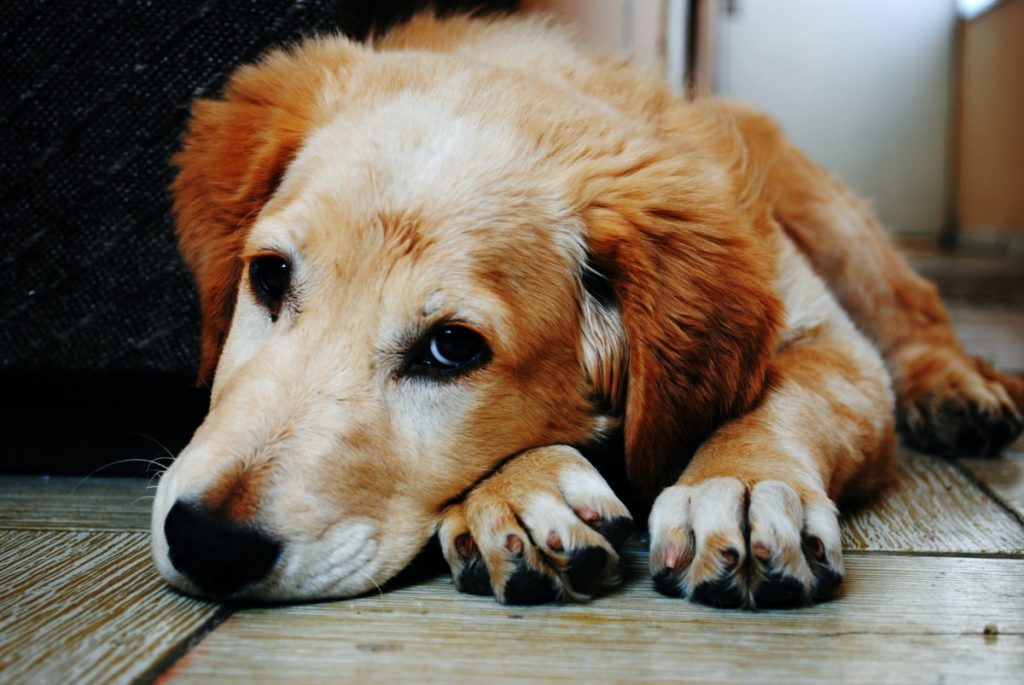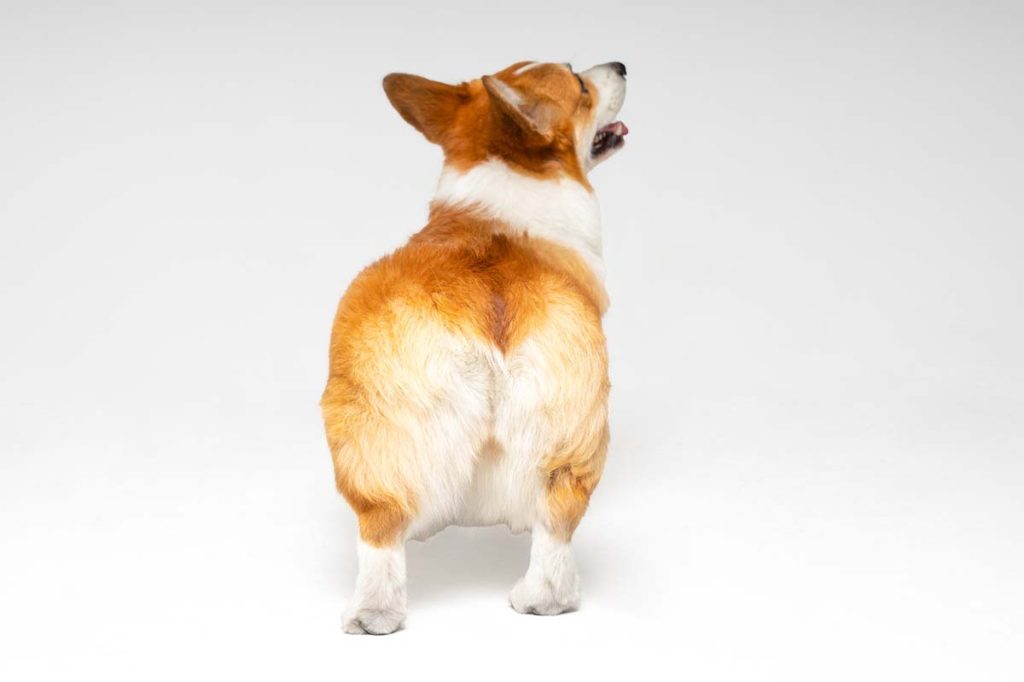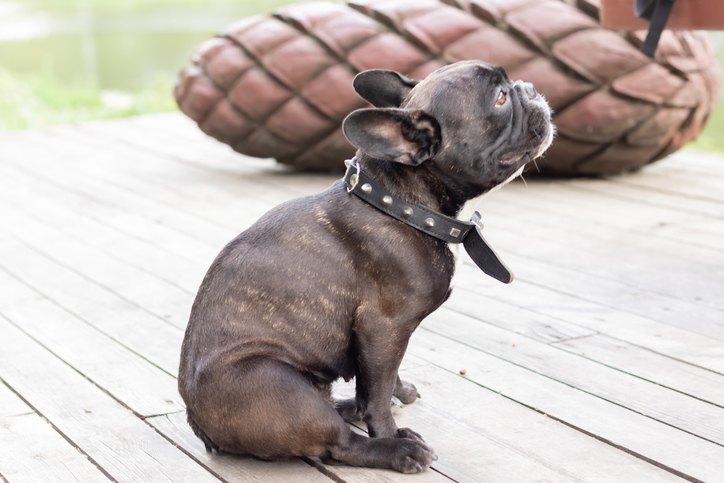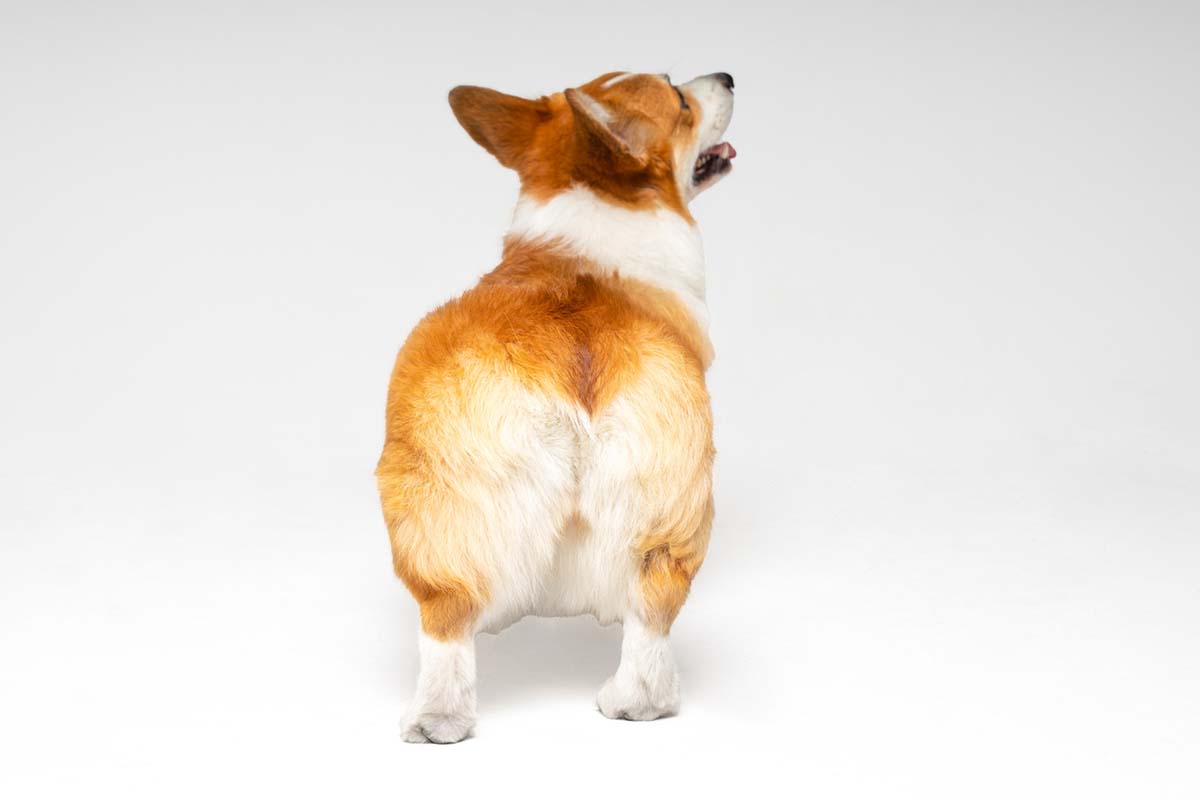Dog anal glands probably aren’t anyone’s favorite topic of conversation. But that doesn’t mean they aren’t worthy of discussion and attention. When problems arise, these small but important areas of the rectum can literally be a pain in the butt for both your dog and your budget.
While smaller breeds and obese dogs are more prone to developing anal sac issues, problems can strike any dog, regardless of breed or size. Thankfully, with the right diet, veterinary support, and care, you can get your dog’s tail end back on track and wagging in no time.
Granted, this can be a tough and confusing topic for any dog owner to tackle on their own. So we’ve enlisted the help of Dr. Jessica Wilson, DVM, to answer all your questions about anal glands, how they work, and what to do when problems arise. You’ll also learn about the important role nutrition plays in promoting healthy anal glands, and how changing your dog’s diet can help prevent and resolve anal gland woes.
Understanding Anal Glands in Dogs

Anal glands, the two grape-sized sacs on either side of the dog’s anus, are scent glands used by dogs to communicate with other canines.
“The sacs have tiny ducts that have openings on either side of the anus and the material [within] is normally secreted when dogs have a bowel movement,” explains Wilson.
These glands produce a stinky secretion with a fishy smell that can function as a “calling card” for other dogs. Much like skunks, canines once released this strong odor voluntarily as a defensive mechanism to mark their territory and repel enemies.
While anal glands are “likely a remnant from prior to [dogs’] domestication,” according to Wilson, they still seem to hold information important to our pets…as evidenced by the butt-sniffing greeting ritual of dogs everywhere.
If you’ve had a dog for some time, you’ve probably heard the term “expressing anal glands” before. Anal gland expression refers to the release of secretion from the anal sacs. This happens naturally when a dog poops. But when that natural expression is interrupted, the sacs can become problematic, causing things like dog scooting or infection.
How Anal Gland Issues Develop
One of the most common issues dogs face when it comes to their anal glands is when the sacs become inflamed or impacted due to a blocked duct. When that happens you might see a dog start to “scoot,” or drag their bottom across a surface to relieve the discomfort.
If impacted anal glands are left untreated, that discomfort can quickly “lead to dog anal gland infection and even abscess formation,” according to Wilson.
“Due to the location of the ducts…if the perfect storm occurs where the ducts become inflamed, feces loaded with bacteria can become trapped within the ducts, and ultimately an abscess can form,” warns Wilson.
She adds, “If the impaction of either or both anal sacs occurs, the sac may rupture externally as the body will have no other choice but to relieve the pressure from the swelling.”
Causes of Anal Gland Problems in Dogs

Some common causes of anal sac inflammation and impaction include:
- Grooming Hazards: The area around the dog’s anus is extremely sensitive. If the area is accidentally nicked during a grooming session, that could lead to inflammation of the glands. “This, along with the dog’s attempts to groom/lick/bite around the anal area, may cause more inflammation leading to possible anal sac issues,” says Wilson.
- Improper Sac Expression: Speaking of grooming, many groomers offer to express a dog’s anal glands as part of their standard services. However, Wilson does not recommend expressing anal sacs unless dogs exhibit signs that there may be a problem first, such as scooting or excessive licking. An improper anal expression can actually cause anal glands to become impacted or inflamed. It’s best not to express them unless there’s a reason to.
- Gastrointestinal Issues: Dogs that suffer from sudden or chronic diarrhea are also prone to anal gland problems. In a healthy bowel movement, the pressure on the anal gland releases secretions naturally. But in the case of loose or soft stools, unreleased secretions can build up and block the gland.
- Food Allergies or Sensitivities: What’s in your dog’s dish can have a big impact on their overall health. In the case of anal gland function, foods that trigger an allergic or gastrointestinal reaction in your dog can deliver a double whammy. According to Wilson, “Food intolerances in dogs may result from poor quality/highly processed feed-grade ingredients found in commercially available pet foods.” Food allergies often trigger inflammation, while food sensitivities can result in constipation or diarrhea — two conditions that contribute to anal gland blockages.
How to Tell If Your Dog Has Anal Gland Issues

Early detection is key to resolving anal gland issues. But recognizing the signs isn’t always as easy as it might seem. Signs your dog has anal gland issues include:
- Scooting
- Excessive licking of the rear end
- Difficulty with defecation
- Blood or pus in dog’s stool
However, “some dogs may only have swelling and inflammation of the perianal area and show no other signs,” says Wilson.
And other dogs may show absolutely no signs at all. According to Wilson, “My own dog has actually had completely open/abscesses of her anal sacs and she never showed signs of scooting or discomfort. Had I not noticed the dripping of fluid on her bed, she would have never told me there was a problem.”
Even when signs are obvious, it can be difficult to tell whether your dog’s itchy bum is due to parasites or issues with its anal sacs. As soon as your dog begins scooting, giving more attention to his hindquarter, or has visibly swollen anal glands, examine the area and consult with the veterinarian.
Additionally, Wilson recommends an immediate trip to the veterinarian “if the dog seems lethargic, if the dog’s appetite seems off, if oozing of bloody or especially foul-smelling material is noted,” or if your dog is showing signs of a fever, all of which can indicate an abscess.
Small breeds are more prone to anal gland issues than larger breeds. Common dog breeds that suffer from anal gland complications include:
- Chihuahuas
- Cocker spaniels
- Beagles
- Bassett hounds
How to Treat Anal Gland Problems
Butt problems like anal sac disease can happen to any breed dog. Depending on the severity of the condition, there are a number of ways to treat your dog’s anal gland issues. Here are some ways to help your dog find relief.
Always discuss your options with a veterinarian first to make sure you choose the right one for your pet.
Support with Food & Nutrition

For dogs with anal sac issues caused by food sensitivities, a balanced diet made of human-grade ingredients with anti-inflammatory properties can provide much-needed relief.
So, what is the best dog food for anal gland issues? “JustFoodForDogs has options such as Fish & Sweet Potato or Venison & Squash that are considered ‘novel protein’ diet options, and these may be appropriate for dogs that need a hypoallergenic protein source to help manage gastrointestinal issues,” says Wilson. Both recipes include omega-3 fatty acids and ingredients that support digestive health.
Dogs suffering from GI issues like diarrhea could benefit from a high-fiber diet, such as the JFFD Metabolic Support diet (available by prescription), considered to be one of the best high-fiber dog foods for anal gland problems.
Probiotic/prebiotic supplements
If your pet has chronic diarrhea, probiotic supplements may help support healthy gut flora and gastrointestinal balance.
Dogs with this type of GI issue will experience discomfort in the perianal region, prompting persistent scooting and grooming, leading to anal sac problems. Simply mix the probiotic with your dog’s food to target the GI issues that can lead to problems with the anal glands.
Expressing your dog’s anal glands
While Wilson does not recommend routinely expressing healthy dog anal glands as a part of the grooming process, manual expression can provide relief once an issue is present. It’s important to do so properly to avoid causing an even bigger problem.
“Expression of the glands can cause inflammation due to the manual pressure,” she warns. Your dog’s anal glands should be expressed, either at the clinic or groomer, only after your veterinarian conducts a rectal exam and diagnoses an issue.
Removing the anal glands
Dogs that have suffered repeated anal sac abscesses and ruptures may develop scar tissue that prevents the natural function of the anal glands. In this case, surgical removal of the anal glands may be appropriate. “A board-certified or residency-trained veterinary surgeon would be the best person to do the procedure,” states Wilson.
Keep in mind that your dog may experience complications from this type of procedure under sedation. “The nerves and structure of the anal sphincter are very delicate, and precision and skill with the procedure are very important,” Wilson says. “Complications may include loss of function of the anal sphincter leading to fecal incontinence.”
3 Tips to Promote Healthy Anal Gland Function

While it may seem daunting to identify and rectify issues once your pet is showing signs of problems with his anal glands, you can maintain proper anal gland function to prevent issues.
Here are three key areas where pet parents can take proactive steps to promote their dog’s overall wellness and the continued health of their anal glands.
1. Preventing Anal Gland Issues with Diet & Nutrition
A diet made from fresh, whole foods with dietary fiber can help promote healthy digestion and promote optimal bowel movements for your dog. JustFoodForDogs offers a variety of recipes catering to dogs with food sensitivities that may trigger anal sac problems.
Higher fiber foods that your veterinarian can prescribe may also prevent your pooch from experiencing issues with anal glands. “Probiotics and higher fiber snacks such as Pumpkin treats from JustFoodForDogs may also be beneficial,” suggests Wilson.
Wilson recommends that pet parents avoid giving their dogs processed and poor-quality commercial pet foods (dry food/kibble), as well as fatty and seasoned human foods. They may cause diarrhea and more serious dangers to your dog’s health like pancreatitis.
2. Water & Exercise
Hydration is key to maintaining normal bowel movements. Make sure your dog has accessibility to plenty of fresh water at all times.
However, your dog’s water bowl isn’t the only source of crucial hydration. JustFoodForDogs diets are specially formulated with moisture-rich, fresh whole food ingredients to increase your pet’s hydration. Regular exercise will also help your dog maintain overall health.
3. Grooming
Before any grooming session, instruct your groomer not to express your dog’s glands unless you specifically request it. If there is a persistent problem, consult with your veterinarian about when and how often to express the dog’s anal glands and who should do it.
Healthy Bum = Healthy Dog
Regardless of what may be causing your dog’s discomfort and pain, speak with your veterinarian to determine the underlying cause or causes, and follow the best short and long-term plan for maintaining anal gland/sac health. It could be as simple as changing your dog’s diet or as costly as surgery, but your pet will be happier and healthier when you get to the bottom of this important issue right away.
By Lavanya Sunkara
This content is for informational use only and does not replace professional nutrition and/or medical advice, diagnosis, or treatment. It is not a substitute for and should not be relied upon for specific nutrition and/or medical recommendations. Please talk with your veterinarian or veterinary nutritionist about any questions or concerns.
